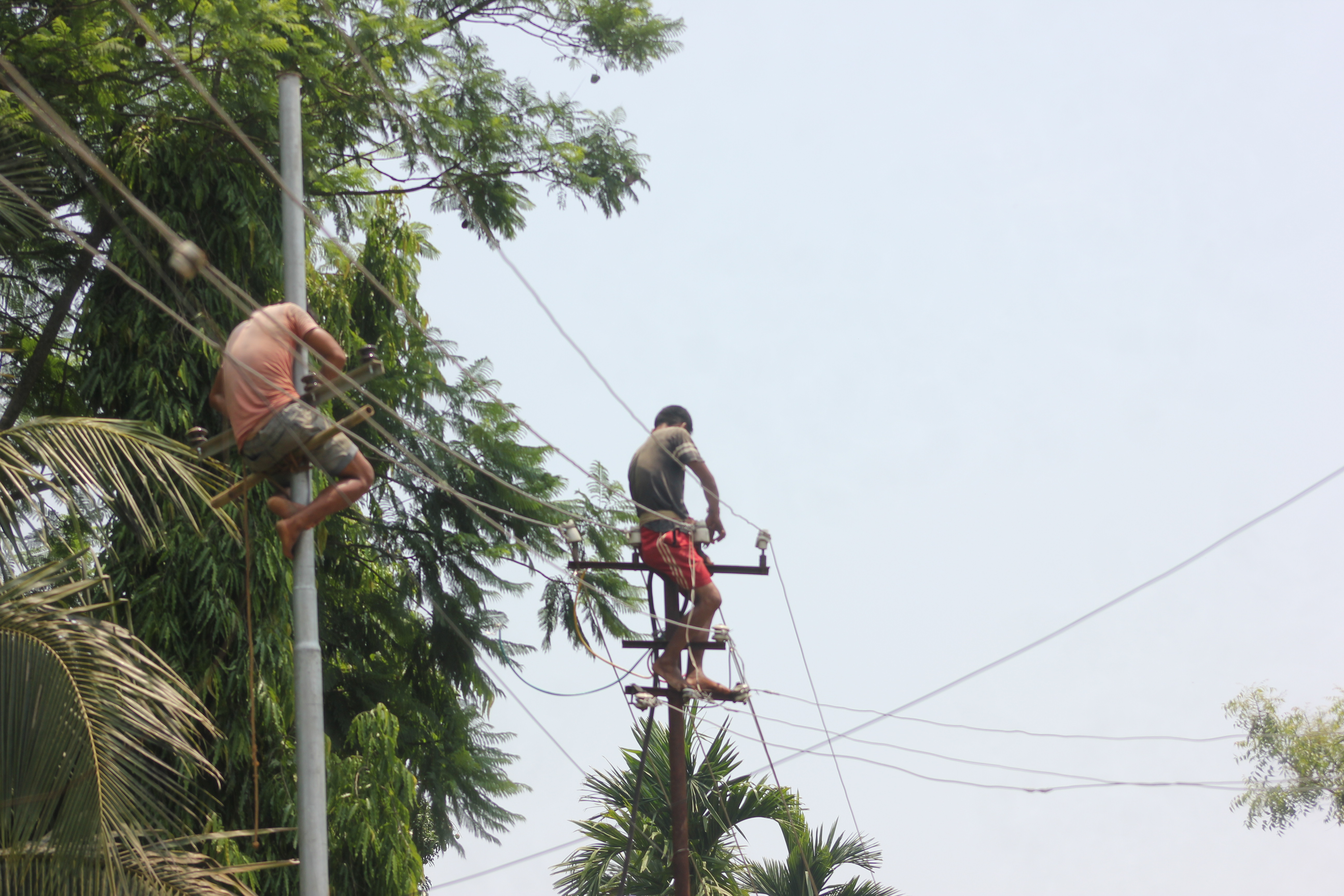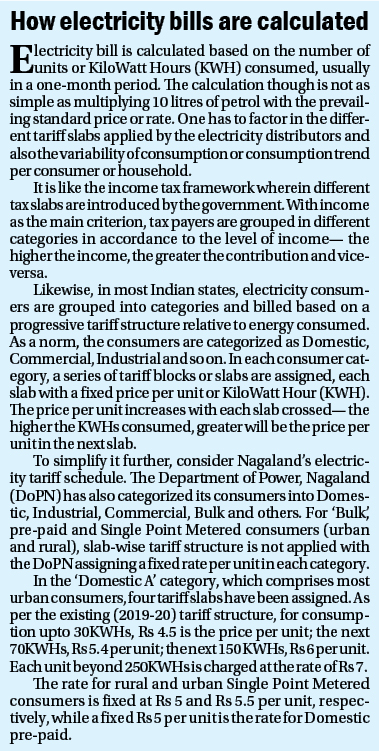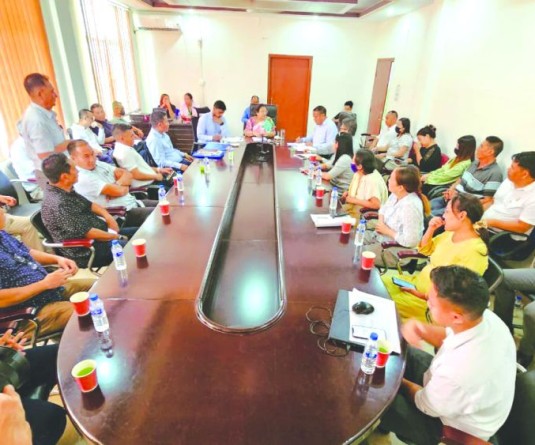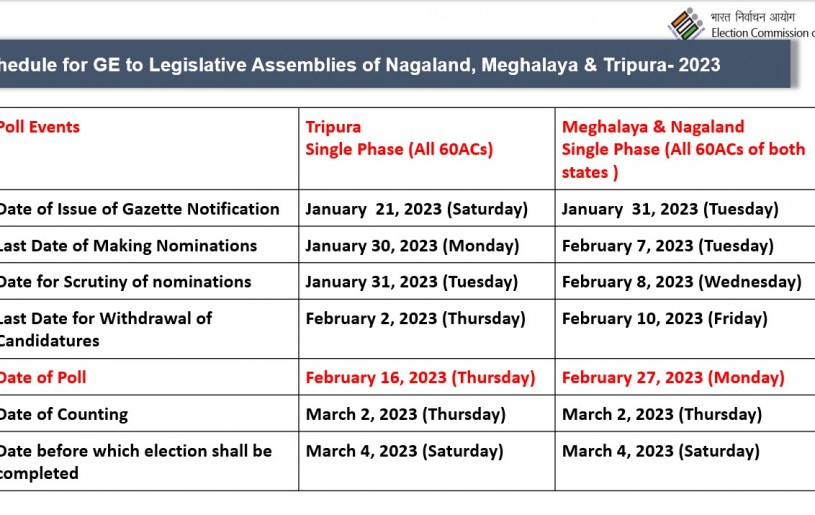Nagaland’s electricity tariff among the highest in India

DoPN is in the midst of a project under the central government's Integrated Power Development Scheme to install new 11kv trunk lines replacing existing power lines. (Morung File Photo)

Imkong Walling
Dimapur | December 22
Nagaland state’s electricity sector has for years been returning widening revenue-purchase gap. A variety of reasons, mostly local in nature, ranging from state governmental apathy and aging power infrastructure to pilferage and inconsistent revenue collection have been recurring themes, while yearly tariff hikes has not been of much help.
Talking of tariff, energy cost in Nagaland has steadily increased during the past decade with a marked jump observed in the revised tariff schedule for 2019-20. The hike averaged 39 paise in the Domestic category, the steepest since 2012-13 when an average hike of 45 paise was affected.

Per unit cost has increased by over 54 percent, roughly corresponding to Rs 2 per unit during 2011-12 to 2019-20 in the ‘Domestic’ category, which comprises most urban consumers.
While a steady rise of Rs 2 in 9 years may not seem much, an independent assessment of the prevailing tariffs in the Domestic category across India points to Nagaland being among the states with the highest electricity retail rate. It places Nagaland in number 9 in the top 10 states with the highest tariffs currently. Along with Assam and Tripura, it is one among 3 north east states figuring in the top 10.
The Domestic Category was sampled for the comparative assessment with 300 units of energy set as the basis for comparing the prevailing prices in this category in effect in the various states and UTs. A slab based pricing structure is applied by almost all power distribution companies/departments or state governments.
As per the estimation, Bihar ranked 1st followed by Maharashtra (excluding Mumbai), Karnataka, Assam, Jharkhand, West Bengal (excluding Kolkata), Punjab, Tripura, Nagaland and Rajasthan. Mandatory charges were not considered. Jharkhand applies a single or flat fixed rate irrespective of the quantum of consumption.
Going by the Nagaland 2019-20 tariff chart, consumption of 300 units a month in the Domestic category would translate into Rs 1763, excluding the charges for public lighting and meter.
In Bihar (February 2019 tariff), it would tally up to Rs 2090 for a consumer in this category with a connected load of less than 7kw. In Maharashtra (September 2018 tariff), it would work out to Rs 2036, in Karnataka (May 2019 tariff)- Rs 1931, in Assam (March 2019 tariff)- Rs 1905 for connected load up to 5kw, in Jharkhand (February 2019 tariff)- Rs 1875, in West Bengal (July 2018 tariff)- Rs 1842, in Punjab (May 2019 tariff)- Rs 1817, in Tripura (November 2014 tariff)- Rs 1764 for connected load less than 3kw and in Rajasthan (May 2018 tariff)- Rs 1762.
The ‘Domestic’ category makes up 47.5 percent of the total 2.87 lakhs metered consumers, as per the Department of Power, Nagaland 2018-19 data. The latest data for 2019-20, estimates the total consumers at 3.3 lakhs with the Domestic category, including BPL consumers, making up a little over 3 lakhs of the total.
Per unit cost in the Domestic category in Nagaland averages Rs 5.72, according to the 2019-20 tariff. The average per unit cost in 2018-19 was Rs 5.33. For reference, the DoPN, in its Aggregate Revenue Requirement report submitted to the Nagaland Electricity Regulatory Commission in November 2018, estimated that the purchase cost of power per unit averaged Rs 3.73 in 2017-18.





